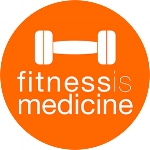What Does Core Strength Really Mean? Plus: 6 Exercises You Can Do Today!
Core strength exercises have become a big part of functional life and athletic performance training. Core strength is emphasized in fitness classes or videos, golf training videos, balance classes, water classes, and the list goes on. But what exactly does it mean? Can I improve my core strength by doing more sit ups? Although this is a popular belief, simply having a “six-pack” will not provide a balanced, strong core. Core training emphasizes strength and conditioning of the stabilizing muscles of the abdomen, thorax, and back. It should include exercises of the hips, lower and upper back, shoulder girdle, and abdominals, which provide the necessary support for the spine and torso. By exercising your core muscles, you will improve the overall stability of your trunk, which leads to your arms and legs, enabling you to meet the demands of your Activities of Daily Living and improvements in any sports you may be participating in. Here are a few of the core strength exercises that I include in the fitness routines for my clients:
1. Seated Knee Raises: While sitting in a supportive chair, such as a kitchen chair, slide yourself up to the front edge. Sit with good posture and place your hands under your thighs. Now raise both feet off the ground, by lifting your knees toward your chest. Do not lean back as you lift your legs. Try to control the movement. Perform 2-3 sets of 10, with a 30” rest in between sets.
2. Bird Dog or Superwoman/man: You can perform this either on a exercise ball or on your hands and knees. Using the ball is more difficult. Either way, reach your right arm out in front of you while you stretch your left leg out behind you. Try to make a straight line from your fingertips to your toes. Hold this for 5 seconds and switch sides. Perform 10 repetitions on each side and do 3 sets. If this is too difficult, start with reaching alternating legs out behind you for one set. Rest. Now reach alternating arms out in front of you while you leave your knees on the ground. Do 2 sets of each exercise.
3. Bridges: Lie on your back with your knees bent. Contract your lower abdominals (the ones you feel when you give a slight cough). With your feet placed flat on the ground, lift your bottom up off the ground, creating a straight line from your shoulders to your knees. Hold for 5 seconds. Perform 10 repetitions. Work your way up to 3 sets.
4. Plank: Start on your hands and knees on the floor. Reach one foot back at a time until you are in classic push up position. Hold this for 30 seconds. You should have a straight line from your shoulders to your heels. Make sure your head and neck stay in line with your spine. Do not let your hips rise up or dip down. Work your way up to 3, 30” holds. Increase your hold time to 1 minute as your strength progresses. If this is too difficult, hold the pose with your knees on the ground instead of your toes. Be sure to stretch your knees out so you are in a straight line from your knees to your shoulders. Start with a 15 second hold and slowing increase your time.
5. Leg lifts: While lying on your back, bend one knee and straighten the other. Lift and lower the straight leg only to the height of your bent knee, and back down without touching the floor or mat. Perform 10 repetitions. Repeat with the other leg and do 3 sets on each leg. If it is too difficult to not touch the ground in between, try only touching every other repetition and work up to no touches for the entire set.
6. Low row pulls with mini squat: You will need an exercise band for this exercise. Wrap your band around a sturdy railing or close it in a door, about chest height. Make sure you’re far enough away that there is an appropriate amount of resistance on the band. Before you begin, sit back in a miniature squat with your arms out straight. Make sure your knees are in line with your ankles and do not jut out in front of your toes. Stand up and pull the band toward you in a rowing motion. Do not raise your shoulders! Repeat these steps for a count of 10. Perform 3 sets. If this combination is too difficult, omit the squat portion of the exercise.
Having a strong core is important for many ares of your life. With this solid foundation, you can improve or avoid back pain, improve your posture, and improve your ability to perform Activities of Daily Living. Get moving!
Like what you just read? Sign up for our weekly Fit Tips!





